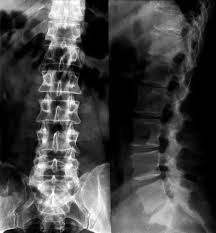
When Do We Opt for Herniated Disc Surgery? With Dr. Alaa El-Banna
Published on: 2025-07-01 | Written by: Dr. Alaa El-Banna Professor of Orthopedic Surgery Fractures and Spine Faculty of Medicine
Dr. Alaa El-Banna, Consultant of Orthopedics and Spine Surgery, explains that a herniated disc is one of the most common causes of back and neck pain. Symptoms can range from mild discomfort to severe pain that affects mobility and daily life. While many cases respond well to conservative treatment, some conditions require precise surgical intervention.
In this article, Dr. Alaa El-Banna outlines the signs that indicate surgery, the latest techniques used, and when it's the right time to intervene.
What Is a Herniated Disc?
A herniated disc occurs when the soft inner material of an intervertebral disc pushes out through a crack in the outer layer, pressing on nearby nerves. It commonly affects the lumbar (lower back) or cervical (neck) regions.
Typical symptoms include:
-
Pain in the lower back or neck
-
Numbness or tingling in the limbs
-
Muscle weakness
-
Difficulty sitting or standing for long periods
When Is Surgery Needed?
Dr. Alaa El-Banna notes that surgery is not the first option, but becomes necessary in these cases:
-
Persistent pain despite medication and physiotherapy
-
Progressive weakness in the limbs
-
Difficulty walking or balancing
-
Loss of bladder or bowel control (medical emergency)
-
Clear nerve compression on MRI scans
Types of Surgical Procedures
Depending on the case, the appropriate surgical technique may include:
-
Microdiscectomy to remove the herniated portion
-
Endoscopic spine surgery for minimal invasiveness
-
Spinal fusion or stabilization in advanced cases
According to Dr. Alaa El-Banna, modern spine surgeries are precise and often involve shorter recovery times.
Postoperative Recovery
After surgery, patients are advised to:
-
Begin gentle movement under medical supervision
-
Avoid bending, twisting, or lifting heavy objects
-
Follow physical therapy programs for back strengthening
-
Adhere strictly to post-op instructions
Dr. Alaa El-Banna emphasizes that surgical success rates are high, with significant improvement in pain and mobility.
Conclusion
Herniated disc surgery isn't always the first choice—but when performed at the right time, it can relieve pressure on nerves and restore mobility. Thanks to the experience of Dr. Alaa El-Banna, patients can receive tailored treatment that ensures the best possible outcomes with minimal surgical risk.

